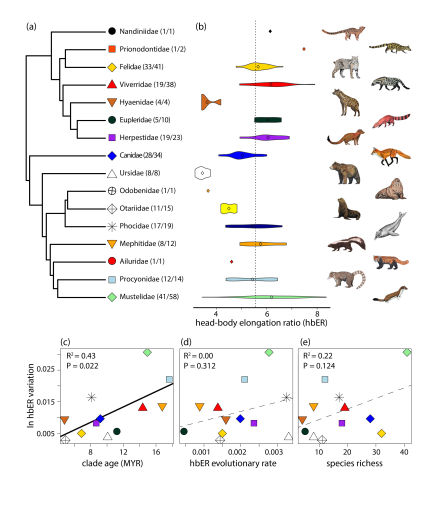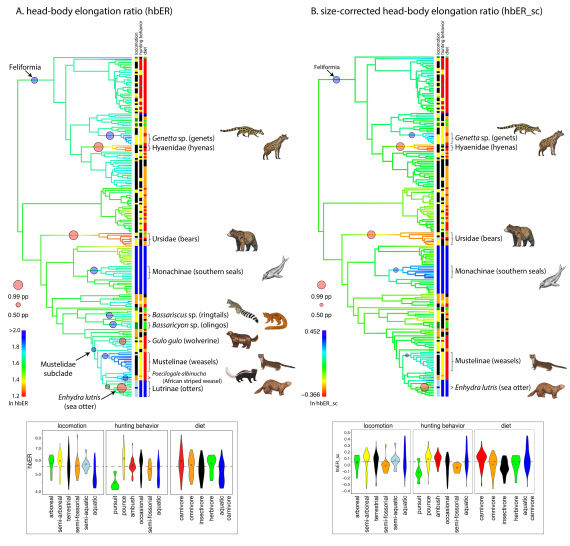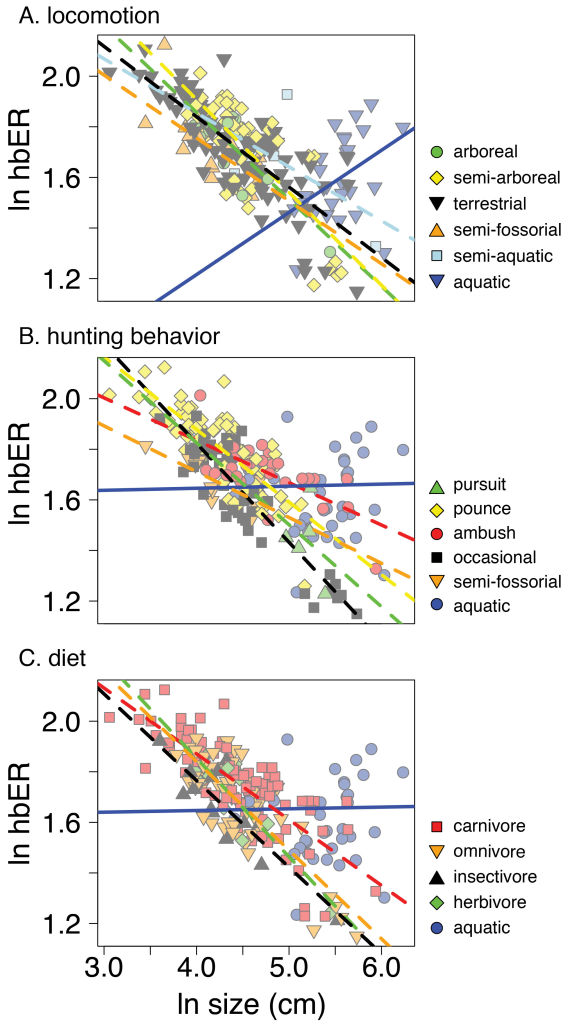Carnivora is a morphological and ecological diverse clade of mammals with high species richness (>280 species; 4th largest mammalian order), large range of body sizes from the 200 g least weasel to the 4,000 kg southern elephant seal, as well as a diverse range of body shapes from robust bears to streamlined seals and elongate weasels. I found that the diversity of body shapes between carnivoran families was best predicted by clade age but not rates of body shape evolution or species richness. This suggests that older families simply had more evolutionary time to accumulate more diverse body shapes than younger families.


